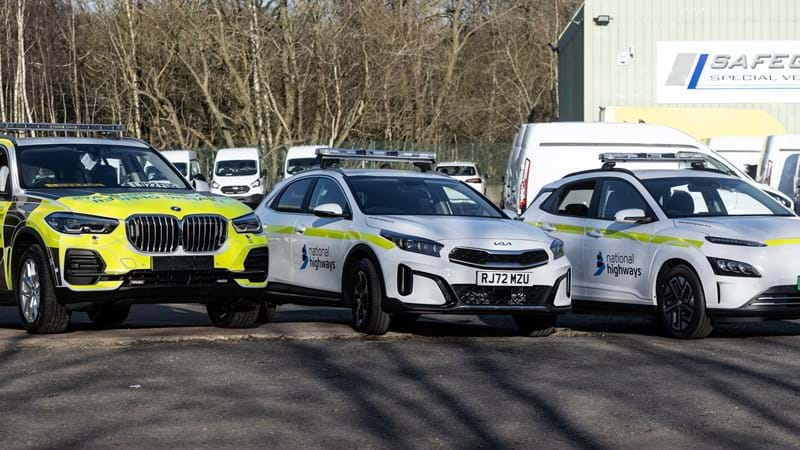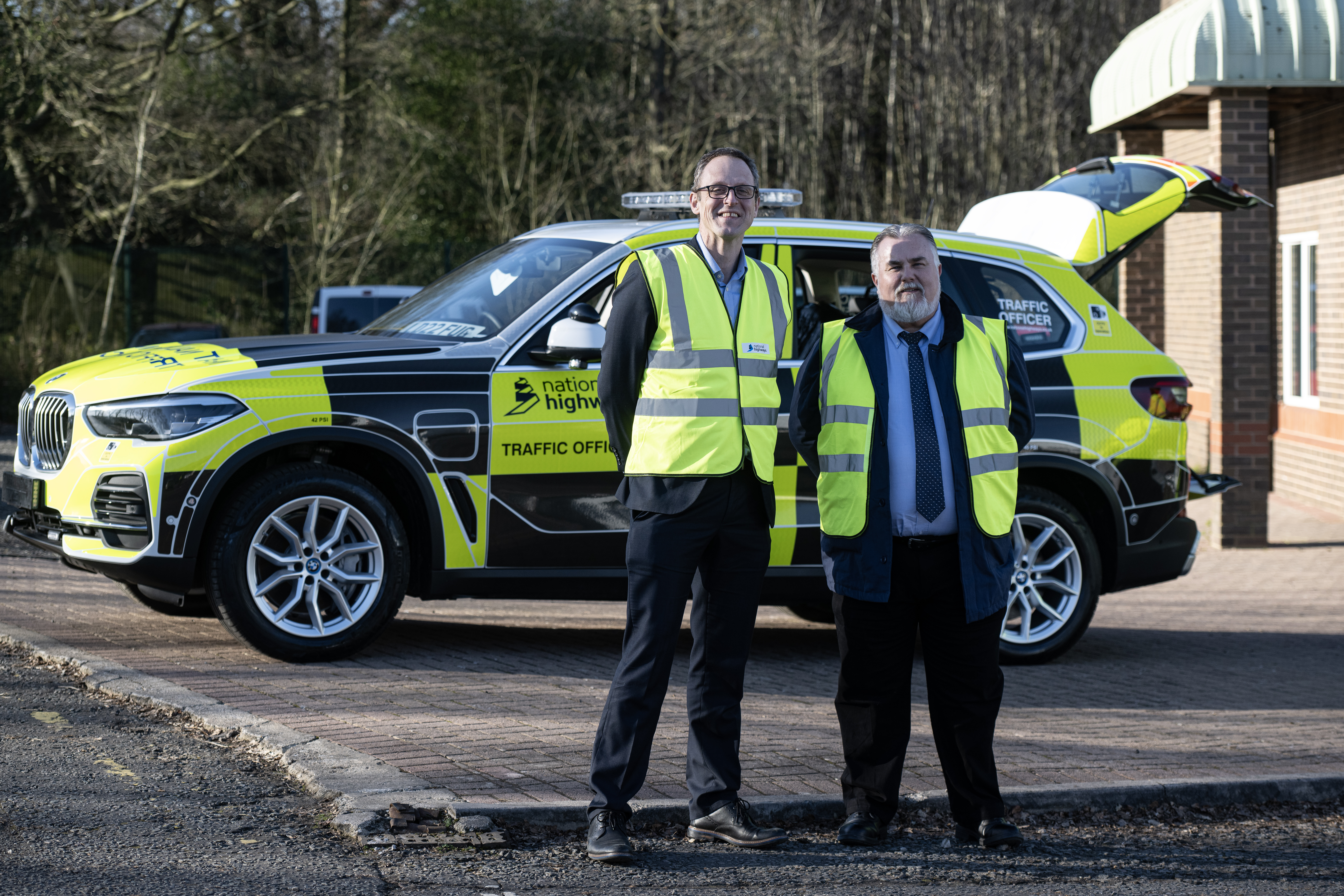New electric vehicles help us cut emissions
Published
07 Feb 2023
We're continuing to super-charge our drive to cut carbon emissions with 307 state-of-the-art zero emission and plug-in hybrid electric vehicles (PHEVs) joining our fleet.

Share this article
The new vehicles are set to cut around 250 tonnes of CO2 emissions a year and will be put into service over the coming months.
They include 31 fully electric zero-emission new Hyundai Konas used for general maintenance and inspection pool cars across the country, and 65 ultra-low emission Kia Xceed PHEVs to replace some of our existing vehicles used to conduct structural surveys.
We've already introduced 187 ultra-low emissions PHEVs for traffic officer operations across the country, with another 24 on the way.
Maintenance and inspection vehicles allow staff to search for defects, monitoring the progress of ongoing maintenance and repairs, and ensuring these have been completed to the correct standard while supporting our commitment to smooth and reliable journeys for road users.
Similarly, the PHEVs for traffic officers provide 4x4 capability and support a target to clear 86 per cent of motorway incidents within an hour, while reducing the our carbon footprint from patrolling England’s motorways and major A-roads.
Finally, we've also introduced Kia Xceed PHEVs to replace some of the existing diesel vehicles used by teams to conduct surveys of gantries, bridges and other structures across the Strategic Road Network.
Steve Elderkin, our Director of Environmental Sustainability, said:
“As a company, we operate more than 1,300 vehicles, so introducing so many new electric vehicles and plug-in hybrids really helps accelerate our journey to net zero, drastically cutting our emissions.
“Our net zero plan has laid out how we want to hit net zero for our own emissions by 2030, with a commitment that our non-traffic officer vehicles will be 100% electric by 2027 and traffic officer vehicles to be 100% electric by 2030."

Steve Elderkin, our Head of Environment and Sustainability, with David Spooner, Managing Director Safeguard SVP Ltd, pictured during a site visit to the Leicestershire offices of Safeguard SVP Ltd.
Andy Butterfield, National Highways’ Operations Customer Service Director, added:
“Our fleet supports the safe operation and ensures the network remains in a good condition. For instance, by helping us get to and clear incidents faster and keeping our roads free of defects.
“These vehicles will help ensure that the network can remain free-flowing and properly maintained while also significantly cutting our emissions as we drive towards net zero.”
The Volvo XC90 and BMW X5 have all been kitted out specifically for us with enhanced storage capability, state-of-the-art lighting and distinctive livery, and will use an ancillary battery pack allowing the vehicles to run purely on electric or alongside the traditional combustion engine.
The vehicles will allow us to manage its emissions more efficiently; day to day, shorter journeys that require less power can be completed purely on the electric battery, resulting in zero emissions.
This will not only reduce service, maintenance and repair costs dramatically but also the company’s carbon footprint.
The move to electric vehicles is among a host of measures we're taking to improve air quality and tackle carbon emissions from road transport as the UK takes steps to become a zero-carbon economy by 2050.
In the plan, we're committed to the following actions:
- By 2027, 100% of non-traffic officer light vehicles will be electric, and by 2030 the traffic officer vehicles will also be electric. The three-year gap is because because electric vehicles that meet our safety requirements are not expected to be available in 2027.
- We've also set an interim target for 75% of the fleet to be electric or hybrid by 2025. Our approach and speed of fleet changeover will be based on the market availability of suitable vehicles, the whole-life greenhouse gas footprint of different fuel options and when existing vehicles reach the end of their leases.
- Our fleet management team will seek annual reports from our suppliers on the availability of low-carbon heavier vehicles such as gritters and snow blowers. We aim to have changed all of our gritter fleet over to hydrogen or electricity by 2040.
- We'll reduce the carbon footprint from other travel by using technology to introduce new ways of working. We'll update our travel policy to discourage flying and incentivise low carbon travel options. In addition, we'll update our expense policy to pay only for low-carbon-emission business travel (electric vehicles, rail and bus/coach) from 2026.
Learn more about our net zero plan.
